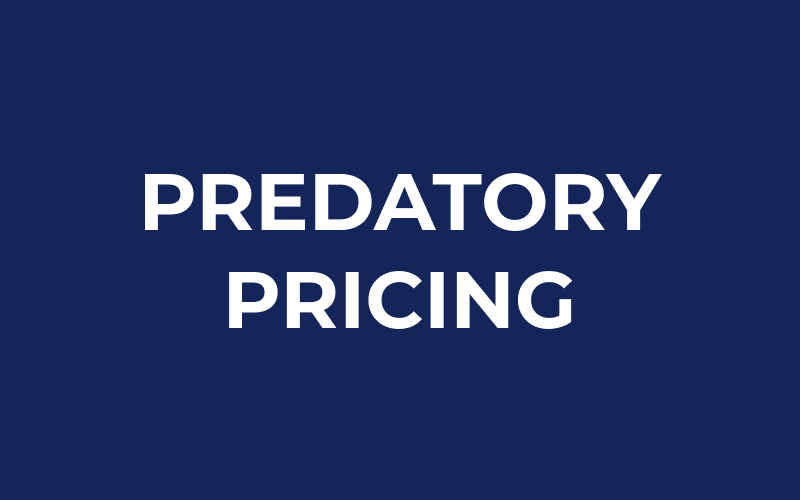
Predatory pricing
Predatory pricing refers to a pricing strategy where a business lowers its prices significantly below the cost of production and sells its products or services, with the intention of driving competitors out of the market. This illegal practice can lead to negative impacts on both consumers and businesses in the market.
Predatory pricing in ecommerce and retail
In ecommerce and retail businesses, predatory pricing can occur when an online retailer lowers its prices to the point where it is not able to cover its costs, and then raises prices once its competition has been driven out of the market. This can result in a lack of competition, which can lead to higher prices for consumers and reduced choices in the market.
It is important for ecommerce and retail businesses to understand and avoid predatory pricing practices, as they can have severe consequences. Businesses can be subject to legal action and fines, and consumers can be negatively impacted by higher prices and reduced choices.
To avoid these pricing practices, businesses should focus on pricing strategies that are sustainable in the long-term, such as price differentiation, dynamic pricing, and value-based pricing. These strategies aim to provide consumers with competitive prices while still allowing businesses to maintain their profit margins.
Summary
Predatory pricing refers to the illegal practice of setting prices significantly below the cost of production in order to drive competitors out of the market. This practice can result in higher prices for consumers and reduced choices in the market. Ecommerce and retail businesses should avoid predatory pricing and focus on sustainable pricing strategies, such as price differentiation, dynamic pricing, and value-based pricing, to provide consumers with competitive prices and maintain business profit margins.

